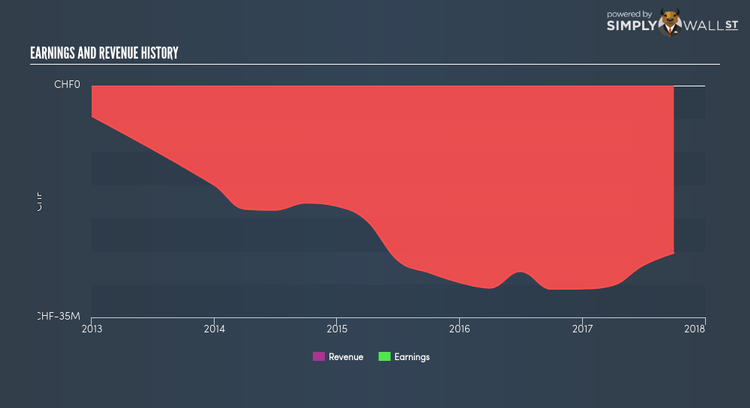What Are The Drivers Of Auris Medical Holding AG’s (NASDAQ:EARS) Risks?

For Auris Medical Holding AG’s (NASDAQ:EARS) shareholders, and also potential investors in the stock, understanding how the stock’s risk and return characteristics can impact your portfolio is important. The beta measures EARS’s exposure to the wider market risk, which reflects changes in economic and political factors. Not every stock is exposed to the same level of market risk, and the market as a whole represents a beta of one. Any stock with a beta of greater than one is considered more volatile than the market, and those with a beta less than one is generally less volatile.
See our latest analysis for Auris Medical Holding
What is EARS’s market risk?
Auris Medical Holding’s beta of 0.12 indicates that the company is less volatile relative to the diversified market portfolio. This means the stock is more defensive against the ups and downs of a stock market, moving by less than the entire market index in times of change. EARS’s beta indicates it is a stock that investors may find valuable if they want to reduce the overall market risk exposure of their stock portfolio.
Does EARS’s size and industry impact the expected beta?
With a market cap of US$15.91M, EARS falls within the small-cap spectrum of stocks, which are found to experience higher relative risk compared to larger companies. Conversely, the company operates in the pharmaceuticals industry, which has been found to have low sensitivity to market-wide shocks. Therefore, investors can expect a high beta associated with the size of EARS, but a lower beta given the nature of the industry it operates in. It seems as though there is an inconsistency in risks from EARS’s size and industry. A potential driver of this variance can be a fundamental factor, which we will take a look at next.
Can EARS’s asset-composition point to a higher beta?
An asset-heavy company tends to have a higher beta because the risk associated with running fixed assets during a downturn is highly expensive. I test EARS’s ratio of fixed assets to total assets in order to determine how high the risk is associated with this type of constraint. Given that fixed assets make up less than a third of the company’s total assets, EARS doesn’t rely heavily upon these expensive, inflexible assets to run its business during downturns. Thus, we can expect EARS to be more stable in the face of market movements, relative to its peers of similar size but with a higher portion of fixed assets on their books. This is consistent with is current beta value which also indicates low volatility.
What this means for you:
You may reap the benefit of muted movements during times of economic decline by holding onto EARS. Its low fixed cost also means that, in terms of operating leverage, its costs are relatively malleable to preserve margins. What I have not mentioned in my article here are important company-specific fundamentals such as Auris Medical Holding’s financial health and performance track record. I urge you to complete your research by taking a look at the following:
Financial Health: Is EARS’s operations financially sustainable? Balance sheets can be hard to analyze, which is why we’ve done it for you. Check out our financial health checks here.
Other High-Performing Stocks: Are there other stocks that provide better prospects with proven track records? Explore our free list of these great stocks here.
To help readers see pass the short term volatility of the financial market, we aim to bring you a long-term focused research analysis purely driven by fundamental data. Note that our analysis does not factor in the latest price sensitive company announcements.
The author is an independent contributor and at the time of publication had no position in the stocks mentioned.

